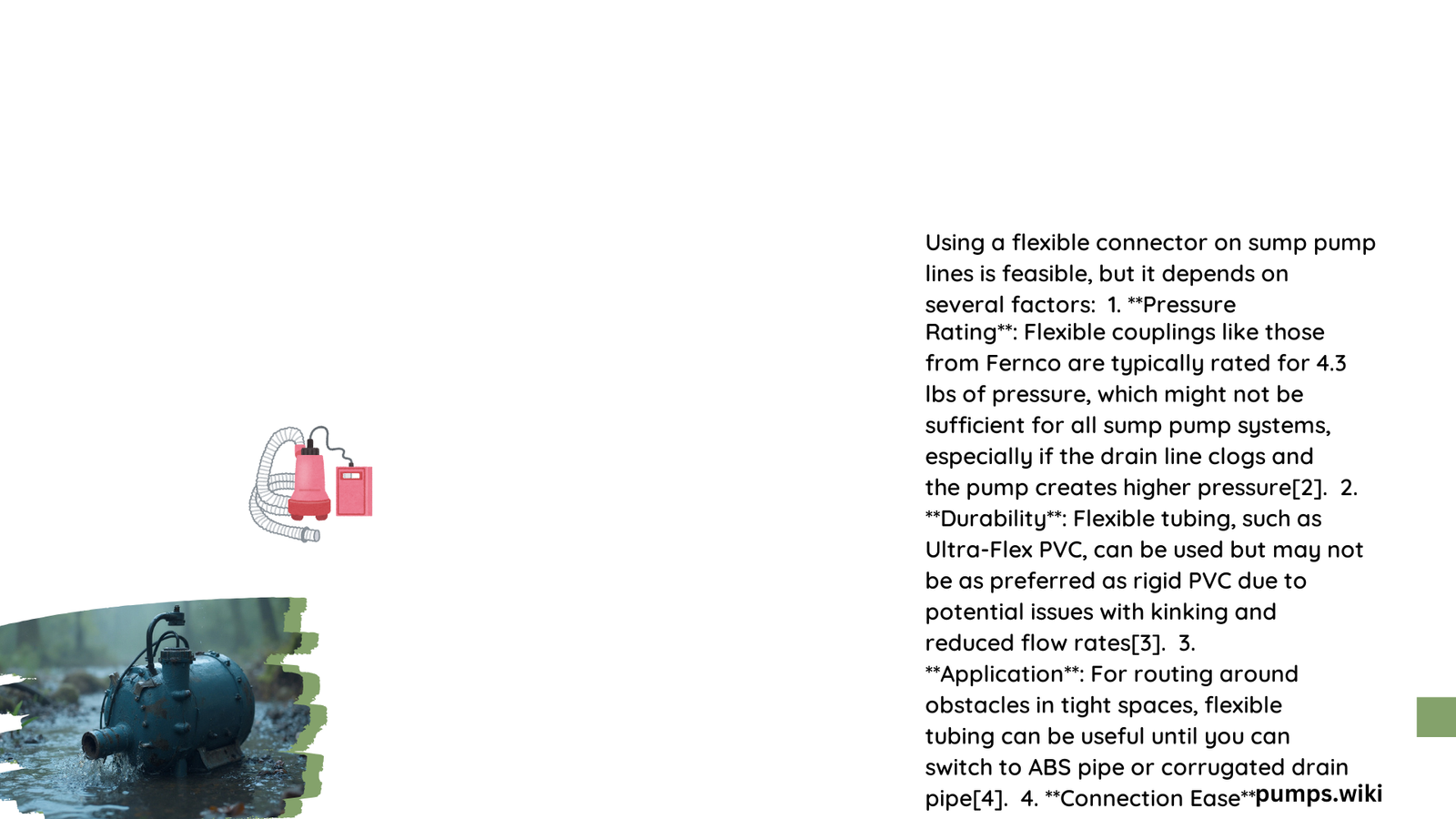Homeowners and DIY enthusiasts often wonder about the feasibility of using flexible connectors on sump pump lines. These specialized connectors provide a versatile and efficient solution for connecting sump pump discharge pipes, offering enhanced durability, vibration absorption, and simplified installation. Understanding the proper techniques, material compatibility, and potential challenges is crucial for ensuring a reliable and effective sump pump drainage system.
What Are Flexible Connectors for Sump Pump Lines?
Flexible connectors are specialized piping components designed to create a resilient connection between a sump pump’s discharge pipe and the main drainage system. These adaptable components serve multiple critical functions:
- Vibration Absorption: Reduce mechanical stress on piping
- Movement Accommodation: Allow slight pipe misalignments
- Leak Prevention: Create tight, adaptable seals
- Installation Flexibility: Simplify complex piping configurations
Key Characteristics of Flexible Connectors
| Connector Type | Material | Diameter Range | Pressure Rating |
|---|---|---|---|
| EPDM Rubber | Synthetic Rubber | 1-1/4″ – 2″ | Up to 150 PSI |
| Stainless Steel Braided | Metal Reinforced | 1″ – 3″ | Up to 250 PSI |
| Nylon Reinforced | Synthetic Composite | 1-1/2″ – 2-1/2″ | Up to 100 PSI |
Why Should You Consider Flexible Connectors?

Performance Benefits
Flexible connectors offer numerous advantages for sump pump installations:
- Reduced Mechanical Stress
- Absorb pump vibrations
- Minimize pipe fatigue
-
Extend overall system longevity
-
Enhanced Installation Flexibility
- Accommodate minor alignment variations
- Simplify complex routing scenarios
-
Reduce rigid connection requirements
-
Improved Durability
- Resist corrosion
- Withstand temperature fluctuations
- Provide long-term reliable performance
How Do You Select the Right Flexible Connector?
Compatibility Considerations
When choosing a flexible connector for sump pump lines, evaluate these critical factors:
- Pipe Diameter Matching
- Material Composition
- Pressure Rating
- Temperature Tolerance
- Chemical Resistance
Installation Recommendations
Preparation Steps
- Measure discharge pipe diameter precisely
- Verify connector material compatibility
- Check manufacturer’s specifications
- Inspect connector for potential defects
Connection Process
- Clean pipe surfaces thoroughly
- Apply thread tape to connections
- Align connector carefully
- Secure with appropriate clamps
- Test for potential leaks
What Potential Challenges Might You Encounter?
Common Installation Issues
- Improper Sizing
- Incorrect Material Selection
- Inadequate Clamping
- Float Switch Interference
Mitigation Strategies
- Use professional-grade connectors
- Follow manufacturer installation guidelines
- Perform regular system inspections
- Consult professional plumbers for complex installations
Technical Specifications to Remember
Recommended Connector Specifications:
– Minimum Burst Pressure: 3-4x working pressure
– Temperature Range: -20°F to 180°F
– Recommended Materials: EPDM, Nylon-reinforced rubber
– Typical Lifespan: 5-10 years with proper maintenance
Expert Tips for Successful Installation
- Always use high-quality thread tape
- Ensure proper pipe slope for drainage
- Avoid excessive bending or twisting
- Periodically inspect connector condition
- Replace connectors showing signs of wear
Final Considerations
Flexible connectors represent an intelligent solution for sump pump line connections, offering enhanced performance and reliability when selected and installed correctly.
Reference:
– Sump Pump Installation Guidelines
– Flexible Connector Technical Specifications
– Plumbing Best Practices
